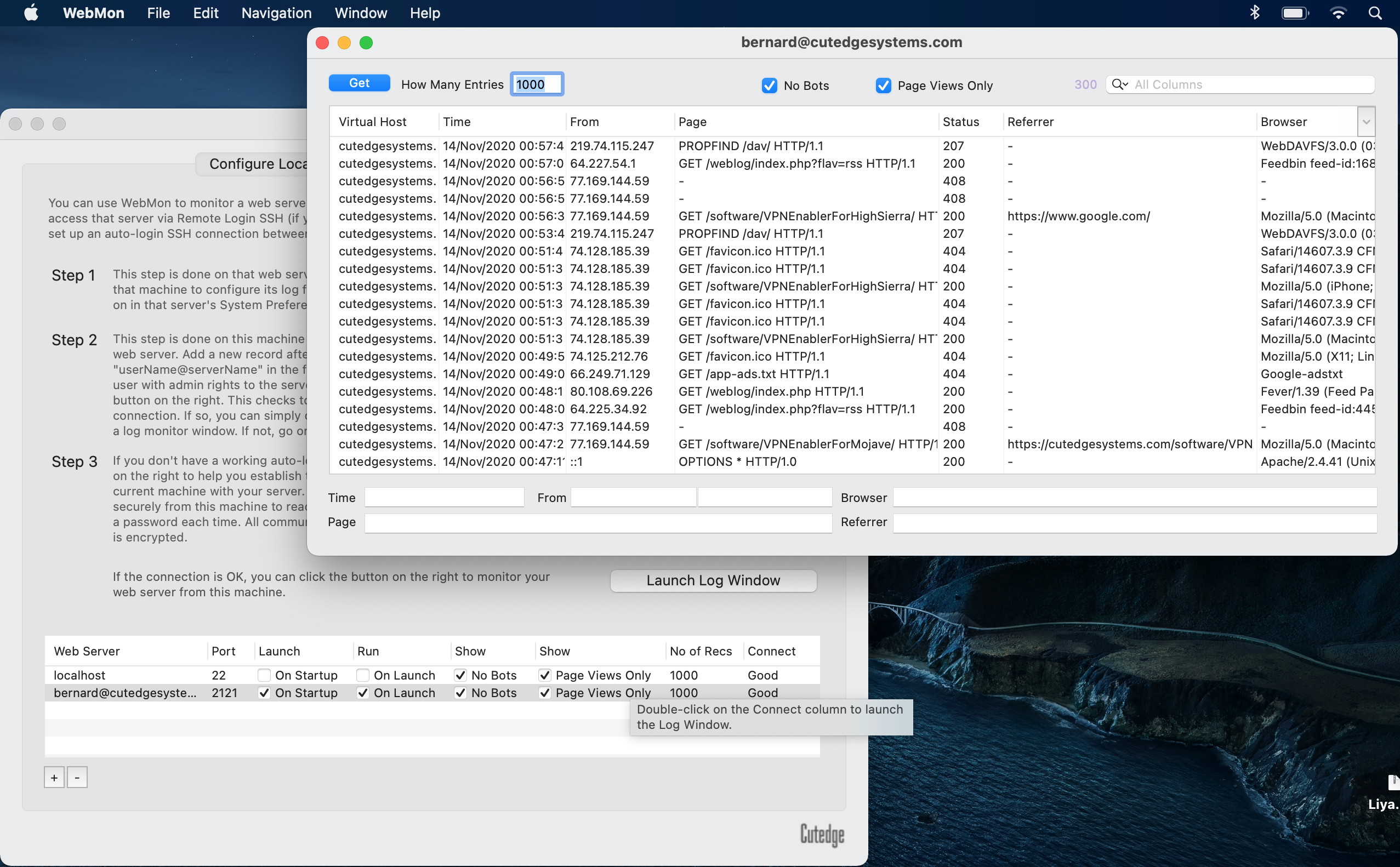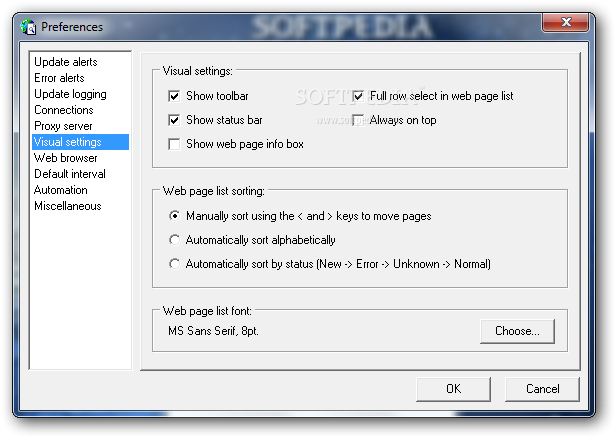
In our case, we do cross-synchronisation meaning the source server will sync to the target server, and the target server will sync to the source server. Let’s say we called the source server and target server. The requirement is to have two identical servers – with the same OS. Note: See the last entry “.” and that will be the total folder size Rsync Make the script executable with the following command:
#WEBMON PORT INSTALL#
Install the lftp component as it has mirror functionality – easy to copy folder via FTP.Ĭreate bash file – script-ftp.sh under /script : TODAY=$(date -iso) This will back up the /backups folder into the FTP site via lftp command. Make the script executable with the following command: sudo chmod +x www-backup.sh FTP Backups ServerAlias DocumentRoot /var/www//public_htmlĬustomLog $ \ systemctl restart apache2Ĭreate this file called in /etc/apache2/sites-available folder. Let’s dig into it! Setup and ConfigurationĮnabled the Rewrite module sudo a2enmod rewrite

This guideline becomes our standard when we deploy the Ubuntu Linux virtual machine. Ideally, it will be a mirror between these two sites.Īs I progressed, I found a few challenges and started documenting this. They are in various modes: test, staging, or production servers.

I set up a few virtual servers in Australia, Germany, and the United States.

We decided to go with Contabo for all public external interface servers, and internally we used Microsoft Azure and DigitalOcean/Docker. However, it turned out it’s not too bad as I thought – it’s like riding a bike all over again 🙂 When configuring with Ubuntu Linux, it doesn’t sound very comforting. However, as we need to scale up our internal websites and lower the hosting cost, I need to go back to managing these natively in Linux. I haven’t touched the Linux server for ages and getting used to it with Cpanel or Parallel. Last Updated: Fix grammatical errors Fix the SQL commands in the Databases / Create Database section.


 0 kommentar(er)
0 kommentar(er)
